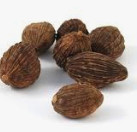Dielectric properties of microwave drying of straw and fruit
ABSTRACT: The relationship between dehydration process and moisture content of straw and fruit and dielectric constant, dielectric loss, loss angle tangent and penetration depth was studied by using TG-DTG thermogravimetric analysis technology and dielectric parameter measurement system.
The results showed that the thermogravimetric process of straw and fruit could be divided into free water removal stage and irreducible water removal stage. The dielectric constant and dielectric loss of straw and fruit decreased slowly and sharply with the decrease of water content.

The dielectric constant and dielectric loss of strawberry decreased slowly in the presence of free water, while that of strawberry decreased sharply when only bound water was left. The higher the moisture content of materials, the greater the energy loss of microwave drying equipment and the smaller the penetration depth; on the contrary, the smaller the moisture content of materials, the smaller the microwave energy loss and the greater the penetration depth. There exists y = Ae-ax + y between material penetration depth D and moisture content_, which accords with the exponential relationship.
Key words: straw and fruit microwave drying; dielectric properties; penetration depth

Herbs and fruits are large-scale medicinal and edible products. The picking time is from August to December every year. They have distinct production characteristics of centralized picking and periodic treatment. Because of the high moisture content (about 70%) of fresh fruits, they will become mildewed and deteriorated if they are not treated with dehydration, so they need to be dried and dehydrated. At present, there are mainly two kinds of straw and fruit drying: baking drying and natural sun drying. Because the traditional drying needs to strictly control the temperature and time of baking, the drying time is long and the drying efficiency is low. The natural sunlight drying is easily polluted and time-consuming due to the limitations of climate and geographical location. Therefore, it is urgent to explore new drying methods with high efficiency and low consumption.
Microwave, as a green heating method, is used to heat materials through in-situ energy conversion of microwave in the material. It has the characteristics of selective heating and internal heating. Microwave drying of water-containing materials is based on the strong time-varying orientation polarization of water in time-varying microwave field. Using these advantages of microwave heating, it is possible to develop new drying methods and processes for straw and fruit. Because the dielectric constant of strawberry directly determines its ability to absorb microwave and drying efficiency, it is important to study the dielectric parameters of strawberry for microwave drying of strawberry.
In this paper, the relationship between dielectric properties (dielectric constant, dielectric loss, tangential loss angle and penetration depth) and moisture content of strawberry during drying was studied by means of dielectric parameter measurement system, in order to provide theoretical support for microwave drying of strawberry.
The thermogravimetric process of straw and fruit can be divided into free water removal stage and bound water removal stage. The dielectric constant and dielectric loss of straw and fruit decrease slowly and sharply with the decrease of water content. The dielectric constant and dielectric loss of strawberry decreased slowly in the presence of free water, while that of strawberry decreased sharply when only bound water was left. The larger the moisture content of the material, the greater the microwave energy loss and the smaller the penetration depth; on the contrary, the smaller the moisture content of the material, the smaller the microwave energy loss and the greater the penetration depth. There exists y = Ae-ax + y between material penetration depth D and moisture content_, which accords with the exponential relationship